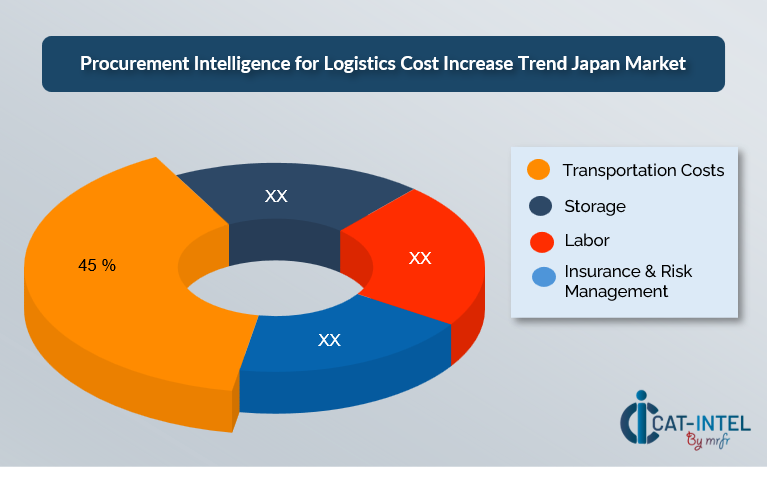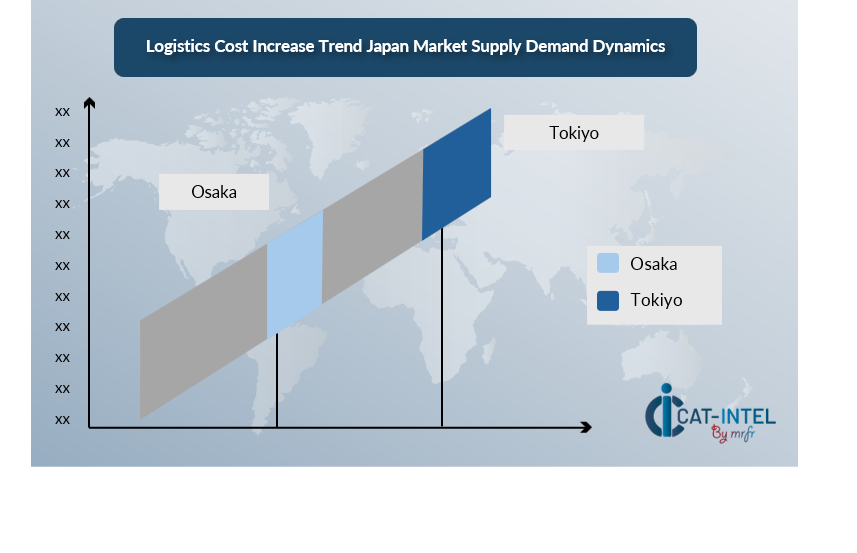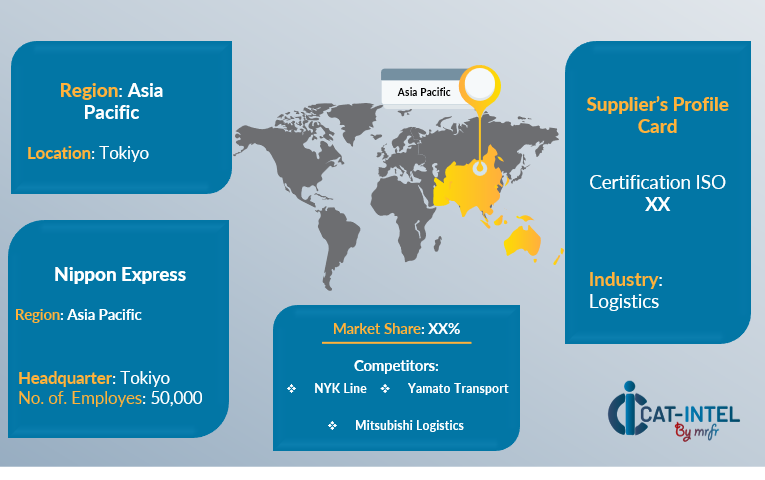Summary Overview
Logistics Cost Increase Trend Japan Market Overview
The logistics cost landscape in Japan is experiencing significant upward pressure, driven by surging demand across high-growth sectors such as electric vehicles (EVs), energy storage, pharmaceuticals, and advanced electronics. This heightened activity is contributing to increased transportation, warehousing, and labor costs, as supply chains strain to meet the rising volume and complexity of shipments—especially for high-purity lithium products and organometallic reagents used in batteries, catalysis, and chemical synthesis. As logistics costs climb, companies are placing a stronger emphasis on cost optimization strategies, including strategic sourcing and the adoption of digital technologies to enhance production and supply chain efficiency. These tools help streamline operations and reduce overhead by improving visibility, forecasting, and responsiveness across the logistics network.
However, several challenges remain on the horizon. Fluctuating raw material prices, the instability of global supply chains, and increasingly stringent quality and regulatory standards are making it harder to control logistics expenses. In response, businesses are doubling down on digital transformation and data-driven decision-making, using advanced market intelligence to better manage risks, adapt to market volatility, and secure a steady flow of high-quality inputs.
Market Size: The global Logistics Cost Increase Trend Japan market is projected to reach USD 549 billion by 2035, growing at a CAGR of approximately 5.6% from 2025 to 2035.
Growth Rate: 5.6%

Sector Contributions: Growth in the market is driven by:
Rising Demand: Rising demand in sectors like EVs, energy storage, and pharmaceuticals is driving up logistics volumes and complexity in Japan.
Industrial Expansion: Increased demand for transportation and warehousing. Tight labor supply and rising fuel prices further amplify the upward cost trend.
Technological Transformation: Sector requires automation and digital systems, raising short-term costs. Integration challenges and workforce reskilling also contribute to the overall cost increase.
Innovation: Automation and AI-driven solutions, drives initial high costs for technology implementation. However, long-term benefits, including efficiency and scalability.
Investment Initiatives: Leading companies are investing in advanced research, AI-driven quality control systems, and sustainable technologies.
Regional Insights: Asia-Pacific & North America remain key regions for Logistics Cost Increase Trend Japan, with increasing adoption of automation technologies.
Key Trends and Sustainability Outlook
Digital Integration: Increasing reliance on robotics, autonomous vehicles, and AI for route optimization and warehouse management is reshaping operations.
E-commerce Growth: The demand for faster and more efficient last-mile delivery continues to rise, driving investments in new delivery models, including drones and delivery lockers.
Digitalization & Data Analytics: Real-time tracking and predictive analytics are improving supply chain visibility and decision-making, leading to better cost management.
Environmental Focus: There is a push for greener logistics solutions, with an emphasis on electric vehicles, sustainable packaging, and energy-efficient warehouses.
Growth Drivers:
Sector Expansion: As the electric vehicle sector grows, the demand for specialized logistics services, including transportation and storage of EVs and their components, increases costs.
Customer Experience Expectations: Increasing demand for faster, more reliable, and more transparent delivery options.
Sustainability Goals: The pressure to adopt environmentally friendly practices is shaping the services landscape, with many providers focusing on sustainable delivery methods.
Technological Advancements: Adoption of new technologies, such as automation, AI, and IoT, is improving logistics efficiency and helping companies stay competitive.
Overview of Market Intelligence Services for the Logistics Cost Increase Trend Japan Market
Recent analyses have identified key challenges such as rising shipping costs, changing consumer expectations, and fluctuating demand. Market intelligence services provide actionable insights that help companies optimize their logistics procurement strategies, identify cost-saving opportunities, and enhance supply chain resilience. These insights also support companies in complying with regulations and maintaining high standards of service while managing costs effectively.
Procurement Intelligence for Logistics Cost Increase Trend Japan: Category Management and Strategic Sourcing
To stay competitive in the Logistics Cost Increase Trend Japan market, companies are streamlining their procurement processes using spend analysis and supplier performance tracking. Effective category management and strategic sourcing are essential for reducing procurement costs and ensuring consistent, high-quality service delivery. By leveraging market intelligence, businesses can refine their procurement strategies and negotiate favourable terms for logistics services, ensuring timely delivery and customer satisfaction while optimizing costs.

Pricing Outlook for Logistics Cost Increase Trend Japan: Spend Analysis
The pricing outlook for Logistics Cost Increase Trend Japan is expected to remain dynamic, influenced by various factors that affect both operational and service delivery costs. Key drivers of pricing trends include fluctuations in fuel and transportation expenses, labor costs, technological advancements in automation, and increasing demands for faster delivery times. Additionally, the rising need for sustainable packaging solutions and carbon-neutral delivery services is contributing to cost pressures.
Efforts to optimize procurement processes, improve supplier relationships, and adopt advanced technology solutions are crucial for managing costs effectively. Leveraging digital tools for real-time monitoring, route optimization, and inventory management can further enhance cost efficiency.
Partnering with reliable logistics service providers, negotiating long-term contracts, and streamlining operational workflows are essential strategies to maintain cost control in the e-commerce logistics sector. Despite these challenges, maintaining high service standards, reducing delivery times, and investing in automation will be key to sustaining profitability.

Cost Breakdown for Logistics Cost Increase Trend Japan: Total Cost of Ownership (TCO) and Cost-Saving Opportunities

Transportation Costs (45%)
Description: This includes fuel, driver salaries, vehicle maintenance, tolls, and other operational costs. Fuel price volatility and rising labor costs.
Trends: The adoption of new technology and autonomous systems is helping companies reduce labour costs and enhance efficiency.
Storage (XX%)
Labor (XX%)
Insurance & Risk Management (XX%)
Cost-Saving Opportunities: Negotiation Levers and Purchasing Negotiation Strategies
In the Logistics Cost Increase Trend Japan industry, optimizing procurement processes and utilizing effective negotiation tactics can drive significant cost savings while enhancing service efficiency. Key strategies for achieving cost reductions include establishing long-term partnerships with logistics service providers, particularly in strategic regions, to secure better pricing, volume discounts, and more favorable terms for shipping and delivery.
Negotiation levers such as bulk purchasing, consolidating shipments, and securing forward contracts can help mitigate the effects of fluctuating transportation costs and supply chain disruptions. Companies can also negotiate for flexible delivery schedules or volume-based pricing that supports both operational needs and cost control.
Working with logistics providers that emphasize sustainability, and operational innovation can offer additional benefits, including access to eco-friendly delivery options and cost savings driven by improved efficiency in routing and warehouse management.

Demand Factors:
E-Commerce Growth: Online shopping drives the need for faster deliveries, requiring more resources for last-mile delivery and increasing costs for transportation and warehousing.
Sector Expansion: The growing demand in sectors specialized logistics, such as temperature-controlled storage and secure transportation, which raises operational costs.
Sustainability Initiatives: Buyers are increasingly favouring suppliers that align with green practices and responsible waste management.
Customer Expectations for Speed and Transparency: Consumers are increasingly demanding quicker and more transparent delivery services.
Transportation Infrastructure: The availability and efficiency of transportation networks, including road, rail, and air freight, significantly influence the supply of logistics services.
Technological Advancements: Integration of AI, IoT, and automation in warehouse management, route optimization is improving and cost-effectiveness of services.
Global Trade and Regulatory Challenges: Increasingly stringent environmental and safety regulations, such as carbon emission reductions and waste management.
Regional Demand-Supply Outlook: Logistics Cost Increase Trend Japan

Japan: Dominance in Logistics Cost Increase Trend Japan
The region is expected to dominate the Logistics Cost Increase Trend Japan, driven by rapid logistic adoption and increasing supply chain operations.
High Production Capacity and Infrastructure: Japan benefits from efficient industrial zones and port networks, handling, transporting increasing volumes products demands specialized infrastructure.
Technological Integration: The adoption of automation in extraction and AI-driven logistics platforms enhances efficiency but comes with high initial costs for system integration.
E-commerce and Retail Growth: The growth of e-mobility and portable electronics, fueled by e-commerce trends, increases downstream demand for logistics.
Sustainability Focus: Environmentally conscious logistics practices like using EV fleets for transport and low-emission port operations.
Japan Remains a key hub Logistics Cost Increase Trend Japan Price Drivers Innovation and Growth.
Supplier Landscape: Supplier Negotiations and Strategies
The supplier landscape for Logistics Cost Increase Trend Japan is diverse and competitive, comprising a range of global logistics providers, regional experts, and specialized service firms. These suppliers play a crucial role in determining factors like pricing, service quality, delivery speed, and technological innovation. The e-commerce logistics industry includes major logistics companies offering comprehensive global and regional solutions, while smaller, niche players focus on specific services such as last-mile delivery, temperature-controlled shipping, and sustainable packaging solutions.
As demand continues to grow, especially due to the rise in the increasing need for faster delivery, logistics service providers are enhancing their service offerings, investing in technological advancements, and expanding their network capabilities. The focus on sustainability and cost efficiency is also driving the adoption of eco-friendly logistics solutions and the use of automation in warehousing and transportation.

Key suppliers in the Logistics Cost Increase Trend Japan market include
Nippon Express
NYK Line
Mitsui O.S.K. Lines
Kintetsu World Express
Mitsubishi Logistics
Yamato Transport
Sagawa Express
Japan Post Service
Hitachi Transport System
Kawasaki Kisen Kaisha
Key Developments Procurement Category Significant Development
Significant Development |
Description |
Market Growth |
The Logistics Cost Increase Trend Japan market is expanding rapidly due to the increasing volume of logistics supply demand, particularly in emerging markets. |
Sustainability Focus |
There is a growing emphasis on environmentally friendly services, with an increasing demand for recyclable packaging, electric vehicles, and carbon-neutral shipping methods. |
Product Innovation |
To meet surging demand from EV and electronics manufacturers, logistics firms are deploying same-day delivery solutions near gigafactories and assembly lines.
|
Technological Advancements |
AI-powered route optimization is slashing delivery times from extraction sites to processing plants. IoT-enabled containers track humidity and movement to ensure safe transit. |
Global Trade Dynamics |
Trade tensions or tariff changes significantly impact shipping costs and lead times, making flexible logistics strategies a competitive necessity. |
Customization Trends |
Customers are demanding just-in-time delivery with customizable packaging. And better tracking of the packages. |
|
Logistics Cost Increase Trend Japan Attribute/Metric |
Details |
Market Sizing |
The global Logistics Cost Increase Trend Japan market is projected to reach USD 549 billion by 2035, growing at a CAGR of approximately 5.6% from 2025 to 2035. |
Logistics Cost Increase Trend Japan Technology Adoption Rate |
Around 50% of companies are adopting advanced technologies like AI, machine learning, and IoT for route optimization and real-time tracking.
|
Top Logistics Cost Increase Trend Japan Industry Strategies for 2025 |
Key strategies include expanding last-mile delivery capabilities, integrating sustainable practices, and enhancing supply chain automation. |
Logistics Cost Increase Trend Japan Process Automation |
Approximately 45% of companies have implemented automation in warehousing, sorting, and packaging to enhance efficiency and reduce costs. |
Logistics Cost Increase Trend Japan Process Challenges |
Major challenges include managing last-mile delivery costs, meeting consumer expectations for fast delivery, and navigating complex global supply chains. |
Key Suppliers |
Leading players in the market include Nippon Express, NYK Line, Mitsui O.S.K. Lines, Kintetsu World Express, Mitsubishi Logistics. |
Key Regions Covered |
Prominent regions include Japan driven by the growing sector and technological advancements.
|
Market Drivers and Trends |
Rising e-commerce, automation, and demand for sustainable, efficient supply chains are key drivers and trends in Japan's logistics market. |








